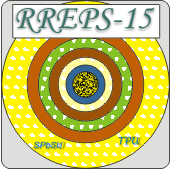Speaker
Michele Bergamaschi
(CERN)
Description
Optical Diffraction Radiation (ODR) is a promising non-destructive transverse beam size diagnostics for future high intensity accelerators. The ODR signal is much less intense than that from the well-known Optical Transition Radiation (OTR), so synchrotron radiation and wake-fields can interfere with the signal, complicating the data analysis. The insertion of a mask upstream of the target allows this undesired background to be reduced but, at the same time, the mask becomes an additional source of light that will interfere with that produced by the target. In order to study this phenomenon a simple OTR interferometer has been installed on the CTF3 CALIFES beam line at CERN. The set-up allows the OTR signal of two screens to be recorded in both an imaging and far-field (angular) configuration. In the imaging configuration the results clearly show a strong correlation between the total light intensity and the distance between the two OTR sources, in good agreement with optical simulations. Both experimental data and simulations show an increasing light intensity for an increasing distance between the sources with a maximum value corresponding to the sum of the intensity of the two sources as predicted by Warstki et al. J.Appl.Phys. 1975. The key parameter for such interference is the formation length L=($γ^2$)∙λ/($2\pi$), where γ is the Lorentz factor and λ the observation wavelength.
Author
Michele Bergamaschi
(CERN)
Co-authors
Pavel Karataev
(Royal Holloway, University of London)
Robert Kieffer
(TERA Foundation (IT))
Stefano Mazzoni
(CERN)
Thibaut Lefevre
(CERN)
Wilfrid Farabolini
(CEA/IRFU,Centre d'etude de Saclay Gif-sur-Yvette (FR))
